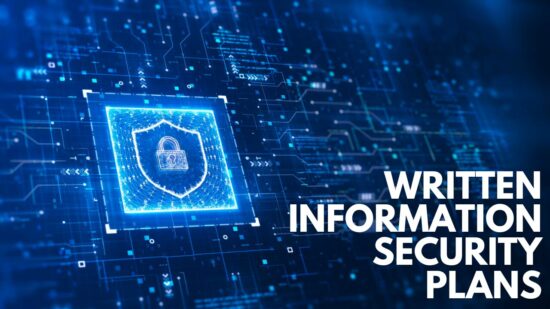Passwords Are Passe: Embracing Modern Security Solutions
The need for strong security measures to protect sensitive information has become increasingly important in today’s digital age. Traditional passwords have long been the default authentication method, but they are no longer considered the most secure option. With the rise of cyberattacks and data breaches, there is an urgent need for more robust authentication methods to safeguard personal and sensitive information.
As technology evolves and cybercriminals find new ways to exploit weaknesses, the limitations of password-based security systems become all the more apparent. This has led to the development of various alternatives to passwords, like biometric authentication, two-factor and multi-factor authentications, and behavioral authentication methods. These solutions aim to provide users with a more secure and user-friendly experience while keeping their data safe from unauthorized access.
Key Takeaways
- Traditional passwords are increasingly seen as inadequate for securing sensitive information.
- Biometric and multi-factor authentication methods offer enhanced security and user-friendliness.
- The future of authentication likely lies in a combination of innovative, passwordless solutions.
The Faults of Passwords
In today’s digital era, you may be overwhelmed with the number of passwords you need to manage. As much as they are ubiquitous, passwords have various downsides, making them less than ideal for securing sensitive information.
Firstly, creating and remembering strong, unique passwords is challenging for many people. Human nature favors simplicity and patterns, leading to weak or repeated passwords across multiple accounts. This habit creates a security risk; if one account is breached, attackers may gain access to other accounts using the same or similar credentials.
Secondly, even when you create strong passwords, there is still the potential for them to be compromised. Data breaches have become increasingly common, and in such cases, your password can be stolen and potentially exposed, leaving your accounts vulnerable to unauthorized access.
Also, passwords can be susceptible to attacks, such as phishing, keylogging, and brute force. No matter how strong and unique your password is, if you fall victim to a phishing attack, malicious individuals can intercept your credentials.
Finally, managing passwords can be cumbersome, especially with multiple accounts across different platforms. Updating passwords while maintaining their complexity and uniqueness is time-consuming and mentally taxing.
While passwords have been the default authentication method for many years, it is evident that they have significant faults. As these issues become more apparent, businesses and individuals are exploring alternative authentication methods to ensure the security of their data. These alternatives include biometrics, multi-factor authentication, and passwordless solutions, offering a more modern and reliable approach to account protection.
Rise of Biometric Authentication
Biometric authentication is becoming increasingly popular as a more secure and convenient alternative to traditional passwords. In this section, we will explore three common types of biometric authentication: fingerprints, face recognition, and voice recognition.
Fingerprints
Fingerprint authentication has been one of the earliest and most widely used biometric methods. Your unique fingerprint patterns are difficult to duplicate, making this method secure. Many smartphones and laptops now have built-in fingerprint sensors, allowing you to unlock your devices and authenticate transactions effortlessly. However, keeping your fingerprint sensor clean and maintaining a backup authentication method is crucial, as various factors like dirt or injury could affect your fingerprint.
Face Recognition
Face recognition technology is becoming more advanced and accurate, making it an appealing option for biometric authentication. Your facial features serve as a unique identifier, and many modern smartphones now include face recognition capabilities to unlock devices and authorize payments. To ensure the best performance, you should keep your face in clear view of the camera and avoid drastic changes to your appearance (e.g., facial hair, makeup, or eyewear) that might affect the system’s accuracy.
Voice Recognition
Voice recognition is another growing trend in biometric authentication. Your voice carries distinct characteristics, such as pitch, tone, and speaking style, which can be used as a unique identifier. Voice recognition technology is utilized in virtual assistants, banking applications, and other industries requiring secure access. To maximize accuracy and security, you should record your voice in a quiet environment and consider updating your voice profile periodically.
By adopting biometric authentication methods like fingerprints, face recognition, and voice recognition, you can enjoy higher security and convenience. Although no authentication method is perfect, biometrics offer a promising alternative to traditional passwords and can help reduce the risks associated with hacks and forgotten passwords.
Two-Factor and Multi-Factor Authentications
Passwords alone can no longer guarantee the security of your accounts. Nowadays, cybercriminals are using sophisticated methods to gain access to personal information. They are sometimes able to crack even strong passwords. To increase the security of your digital accounts, enabling two-factor authentication (2FA) or multi-factor authentication (MFA) is essential.
- Two-factor authentication (2FA) is a security measure that requires you to provide two verifiable credentials to access online resources. The first factor is something you know, like your password, and the second is something you have, like a mobile phone receiving a text message or push notification. By using these two factors in combination, 2FA greatly increases the level of security compared to just using a password.
- Multi-factor authentication (MFA) is similar to 2FA but requires users to provide at least two verifiable credentials. MFA can include additional factors such as biometrics (e.g., fingerprint or facial recognition) and location information. Implementing MFA is even more secure than 2FA as it adds more protection to your accounts.
To start with 2FA or MFA, check if the application or website offers these features. Many popular services, such as Google, Facebook, and financial institutions, offer built-in support for 2FA or MFA. If the service doesn’t support it natively, you can use third-party applications like Google Authenticator or Authy to enable this additional security layer. Remember, enabling 2FA or MFA protects you and helps safeguard your sensitive information from unauthorized access.
In conclusion, don’t rely solely on passwords to protect your accounts. Embrace two-factor and multi-factor authentication to enhance your digital security. Be confident that these additional layers of protection will keep your sensitive information safe from cyber threats.
Behavioral Authentication Methods
As technology evolves, so do authentication methods. You may be familiar with traditional authentication methods such as passwords, PINs, and secret questions. However, behavioral authentication methods pave the way for increased security and convenience in the digital age.
Behavioral authentication focuses on the unique ways in which you interact with your devices and online services. These methods analyze patterns such as typing speed, mouse movements, and how you hold and interact with your smartphone. Since these patterns are constantly updated, they create a dynamic and evolving user profile, making it difficult for attackers to imitate your behavior.
One advantage of behavioral biometrics over traditional methods is that it reduces the reliance on easily forgotten or stolen static credentials, like passwords or fingerprints. With behavioral authentication, you don’t need to remember or carry any physical token; you are, in a sense, your password.
In addition, behavioral authentication is often implemented as part of a multi-factor authentication approach, to ensure that even if one authentication layer is compromised, additional layers are in place to protect your account and sensitive information. This provides an extra layer of security, enhancing the overall safety of your digital presence.
However, it is important to consider the privacy implications of using behavioral biometrics. As these methods rely on monitoring your behaviors and patterns, there might be concerns regarding the storing and processing of such personal data. Always be aware of the companies’ privacy policies and data handling practices employing these authentication methods.
To summarize, behavioral authentication methods are a promising development in the security landscape. They offer a more dynamic and secure alternative to traditional static authentication methods like passwords. By leveraging your unique behavioral patterns, these systems provide enhanced security and convenience, ensuring you remain protected in the ever-evolving digital world.
Passwordless Future
Shortly, you may no longer need to worry about remembering complex passwords for your online accounts. A passwordless future is becoming more plausible due to recent technological advancements and increased security concerns. Companies like Google are already working on implementing passkeys, an alternative to traditional passwords that offer a more secure and user-friendly experience.
You might wonder how a passwordless future would work. The key is to replace traditional password-based authentication with more secure and convenient methods, such as biometrics, hardware tokens, or multi-factor authentication (MFA). By utilizing these technologies, you can verify your identity using your fingerprint, facial recognition, or a physical device without needing to recall a string of characters.
There are several advantages to embracing a passwordless future. First, it eliminates the risk of falling victim to password-related security threats, such as brute force attacks, credential stuffing, or phishing scams. Second, it simplifies the login process by removing the need to create, remember, and update passwords, saving you time and reducing the chances of being locked out of an account due to forgotten credentials. And finally, it promotes stronger security, as biometric data and hardware tokens are much harder to fake or replicate than traditional passwords.
However, it’s essential to be aware of the potential drawbacks of a passwordless future. For example, biometric data could be susceptible to theft or manipulation, and hardware tokens might be lost or damaged. Moreover, adopting these new methods may require time and resources for businesses to implement and for users to adapt to the changes.
As the world moves towards a passwordless future, you must stay informed about the latest technological developments and best practices in digital security. Doing so lets you make well-informed decisions and protect your personal and professional online accounts from potential risks.
Secure and User-Friendly Alternatives
As you search for secure and user-friendly alternatives to traditional passwords, consider the following options that provide improved security and ease of use.
- Passkeys are a password-free way of logging in that offer better protection against phishing and malicious websites. They can provide a more secure and hassle-free experience than traditional passwords.
- Risk-based authentication eliminates the need for users to prove their identity through passwords or other credentials. Instead, this method analyzes the risks associated with each login attempt, thus reducing the reliance on passwords.
- Biometrics enables you to use your unique physical characteristics, such as fingerprints, facial recognition, or voice, to access your accounts securely. Biometric authentication is often more secure than passwords, as malicious actors find it harder to replicate these physical traits.
- Multi-factor authentication (MFA) combines different types of authentication methods, such as something you know (e.g., a password), something you have (e.g., a smartphone), and something you are (e.g., a fingerprint). By using multiple layers of authentication, MFA provides a higher level of security than relying on passwords alone.
- Password managers can help you generate and store complex, unique passwords for each account, reducing the risk of password reuse or easily guessable passwords. A good password manager will securely store and autofill your login credentials, making it easier to maintain strong security practices.
In summary, there are several secure and user-friendly alternatives to traditional passwords. Passkeys, risk-based authentication, biometrics, multi-factor authentication, and password managers can provide a more secure and convenient experience while protecting your online accounts.
How BACS Consulting Group Supports The Cybersecurity Requirements Throughout California
As a business operating in California, staying ahead in the ever-evolving cybersecurity landscape is crucial. BACS Consulting Group is committed to helping you meet your cybersecurity requirements with a comprehensive and tailored approach. From proactive monitoring to ongoing support, here’s how BACS Consulting Group supports California-based businesses with their cybersecurity needs:
- Proactive Approach: BACS Consulting Group believes in taking a proactive stance regarding cybersecurity. Continuously monitoring your network for potential threats ensures that your security measures stay up-to-date and ahead of emerging risks. This commitment to staying vigilant can mean staying secure and falling victim to a cyber-attack.
- Multi-Layered Security: Recognizing that there is no one-size-fits-all solution for cybersecurity, BACS Consulting Group employs a multi-layered approach to protect your business. This includes managed detection and response, perimeter security, vulnerability scanning, and penetration testing, creating a robust defense against potential cyber threats.
- Cybersecurity Compliance: While not all organizations fall under specific cybersecurity compliance requirements, maintaining this compliance can be a positive step towards a secure and efficient business. BACS Consulting Group helps you meet these requirements by implementing protocols defined by third-party standards and guidelines.
- Ongoing Support: BACS Consulting Group understands cybersecurity is an ongoing process requiring regular updates and improvements. That’s why their partnership with you extends well beyond the initial implementation of your strategy. Their team of experts remains available to provide support, ensuring that your business stays ahead of the curve regarding cybersecurity best practices.
By partnering with BACS Consulting Group, your California-based business can ensure its cybersecurity requirements are in good hands. With their proactive approach, multi-layered security, commitment to compliance, and ongoing support, you can focus on what you do best — running and growing your business.









